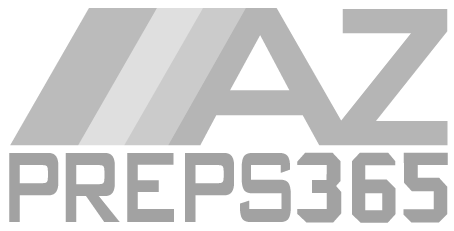New football reclassification model approved
March 1, 2019 by Jose Garcia, AZPreps365

The Arizona Interscholastic Association’s Legislative Council passed a new reclassification model for football during its annual meeting Friday.
The model, standard deviation, will use the average weighted maxpreps power rating to determine the conference placement of a football team. The previous three seasons of a team will be used to calculate the power rating.
The new model will begin during the 2020-21 school year. According to the new bylaw, a team can't move up or down more than one conference.
And instead of reclassifying football teams every two years, football teams will be reclassified after each season under the new model. The 1A Conference, 8-man football teams are excluded from the model.
In 2020, if a 2A school school wants to petition to 1A, it can still do so. The new football reclassification model needed 28 yes votes to pass.
The final vote count was 31-7. The rationale that was presented by AIA staff and the Football Reclassification Committee for adopting the new football bylaw:
Due to the uniqueness of the sport of football, separating the classification from other team sports permits more opportunities for equal competition to occur.
Members of the AIA’s six conferences and the Arizona School Boards Association comprise the AIA’s Legislative Council. The council is the AIA’s legislative body that adopts and amends the AIA’s bylaws.
New prior contact rule approved
The Legislative Council also approved another big agenda item, a new prior contact rule.
“It provides clarification,” AIA Assistant Executive Director Joe Paddock said. “It provides more specific language as we heard from the courts, when this was brought to court and the judges rulings indicated to us that we needed to have more specific language that stated exactly what the intend of this rule was.”
The new prior contact rule passed with 34 votes in favor as emergency legislation.
The rule goes into effect immediately. Offseason individualized instruction was the biggest factor for the rule changes.
Transfers can still file a hardship appeal under the new rule.
“Now we are processing this as unique individual situations as opposed to trying to apply a rule that was so narrowly defined as individualized instruction,” Paddock said. “What’s coaching and what is instruction was ambigious. The language is more clear."
The new rule:
15.12 RECRUITMENT RULE
15.12.4.14
PRIOR CONTACT – Prefatory statement: In an effort to preserve and promote competitive fairness and equity, and consistent with the AIA’s mission to ensure that academics remain the primary focus of its member schools, the Prior Contact rule is an effort to deter recruiting of student-athletes and minimize athletically motivated transfers. However, the rule applies regardless of whether there is any evidence of athletic motivation or recruitment.
Despite compliance with the other provisions of AIA Bylaws, a student who transfers from one school (sending school) to another school (receiving school) is ineligible in the sport involved for one year from the date of attendance at the receiving school, if any of the following circumstances existed during the one year preceding the transfer:
- The student participated as an individual, on a school team, or on a non-school team coached, directed, supervised, managed, coordinated, owned or operated by any of the receiving school’s coaches (in the sport involved), administrators or parents.
- The student participated at an open gym, open weight room, or open athletic facilities at the receiving school. For this circumstance, the sport involved is deemed to be any interscholastic sport in which the student has participated during the current or previous school year.
- A coach at the receiving school has served as a personal trainer, coach, conditioner or instructor for the student. For this circumstance, the sport involved is deemed to be any interscholastic sport in which the student has participated during the current or previous school year.
- The student participated in a camp, clinic, combine, showcase or similar event where a coach, trainer, or instructor in the sport involved at the receiving school worked, whether on a paid or volunteer basis.
As used in this rule, the term “coach” includes any person who coaches, volunteers, manages, administers, or assists in any capacity with the coaching or training of the school or non-school team, regardless of compensation or contract status. No personal relationship, individual instruction or direct contact between the coach and the student is required for application of this rule. For example, a coach of a football team, regardless of position or group he/she coaches, is considered to be a coach of the entire football team, at all levels (freshman, junior varsity, varsity), and this rule applies.


